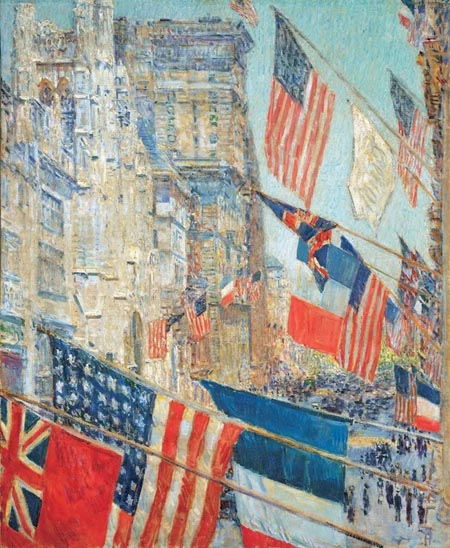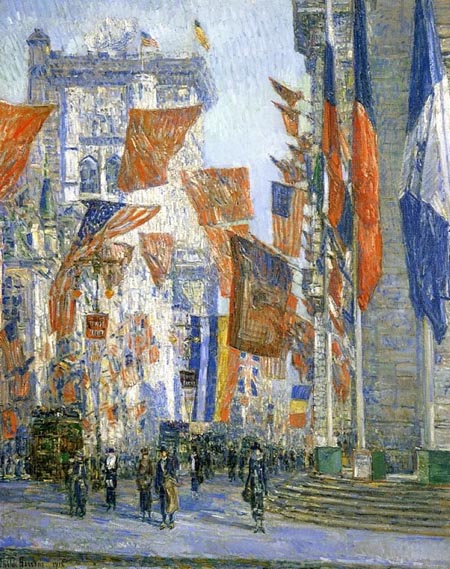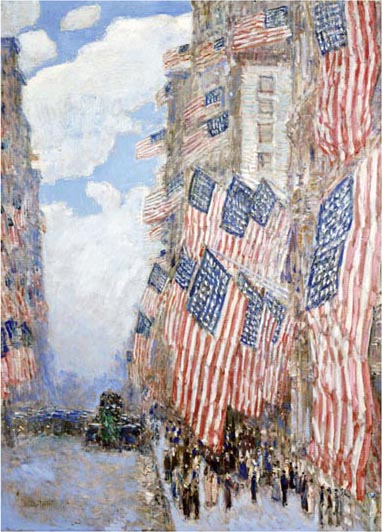For more than half a century, Childe Hassam was one of the most prolific impressionist painters from America.
He was popular for painting compositions of patriotic, flag-draped New York City during the turn of the 20th century and during World War I.
Hassam was famous for his work that showed New York City on the Fourth of July, on Allies Day, on Celebration Day, and on Victory Day. He consistently created compositions with themes featuring Americana and patriotism. This was the primary theme for his work throughout his career and one of the major criticisms of his work.
Hassam was one of the most vigorous American painters and etchers. His work possessed considerable technical ability, and his work captured feeling for light, while showing subtleties and nuances with color. Although his work exhibited his craftsmanship as an artist, Hassam was not considered a master painter because he painted similar works throughout his career.

oil on canvas by Childe Hassam

oil on canvas by Childe Hassam

oil on canvas by Childe Hassam

oil on canvas by Childe Hassam

oil on canvas by Childe Hassam

oil on canvas by Childe Hassam
Hassam’s career spanned 1880 through 1930 – two score and a decade. Hassam lived in France from 1886 to 1889 and he was exposed to the French impressionists. Change and innovation for visual arts were profound. Impressionism was followed by cubism, expressionism, surrealism, and symbolism. The geniuses or artists of note experimented with technique and composition. Unfortunately, Hassam’s work stuck to his preferred style and subject matter.
In 2004 the Metropolitan Museum of Art hosted a major exhibition of Childe Hassam’s work. Michael Kimmelman reviewed Hassam’s work in Art Review: America’s Star-Spangled Impressionist, for the New York Times:
Hassam could do almost anything technically in a variety of media: a night scene, the glint of water on the side of a horse-drawn carriage, dappled sun through a scrim of autumn trees, people massing in a canyon of tall buildings, a Seville courtyard in the slanting light of the late afternoon. Anything except what mattered most, which was to offer up something beyond glitter and nostalgia. He painted thousands of more or less interchangeable pictures to satisfy a passive upscale market.
Although Hassam had talent and technical ability, his work lacked insight on the subject and he avoided grittier urban subjects or controversial events.
The biggest impact made by Hassam could be that his works helped spread an appreciation of Impressionism in the U.S. His works played a crucial role in convincing American collectors and curators of the merits of this groundbreaking new approach to art.